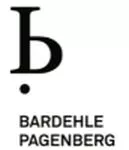- in European Union
- in European Union
1. Key takeaways
UPC competence is not temporally limited (Art. 32(1) UPCA).
The Court's jurisdiction extends to acts of infringement before the UPCA's entry into force, provided the patent is within the UPC's competence at the time of action.
The absence of a temporal limitation in Art. 32(1) UPCA aligns with the UPCA's objective to unify patent litigation and avoid fragmentation.
During the transitional period, UPC and national courts have concurrent competence (Art. 83 UPCA, R. 5 RoP).
For European patents not opted out, both the UPC and national courts are competent, and the choice of forum does not limit the subject matter or time period of the chosen court's competence.
Withdrawal of an opt-out restores full UPC competence, including for acts during the opt-out period (Art. 83(4) UPCA, R. 5.7 RoP).
The opt-out mechanism is binary; withdrawal brings the patent fully back under UPC jurisdiction, including for alleged infringements during the opt-out.
Determination of UPC competence is separate from applicable law.
The Court's jurisdiction is distinct from the question of which substantive law applies to the alleged acts of infringement; this is to be determined at a later stage.
No referral to the CJEU was necessary (Art. 267 TFEU, R. 266 RoP).
Applying the current competence rules (Art. 32 UPCA) doesn't breach the non-retroactivity of treaties principle (Art. 28 VCLT). The Court found the interpretation of the UPCA and VCLT clear, so no preliminary ruling from the CJEU was required.
2. Division
Court of Appeal, Panel 1a
3. UPC number
UPC_CoA_156/2025, APL_8790/2025
4. Type of proceedings
Appeal of a preliminary objection (R. 19 RoP)
5. Parties
Appellants (Applicants/Defendants in First Instance):
- XSYS Germany GmbH
- XSYS Prepress N.V.
- XSYS Italia S.r.l.
Respondent (Claimant in First Instance):
Esko-Graphics Imaging GmbH
6. Patent(s)
EP 3 742 231
7. Body of legislation / Rules
R. 19 RoP (Preliminary objection procedure)
R. 5 RoP (Opt-out and withdrawal procedure)
Art. 32(1) UPCA (Competence of the UPC)
Art. 3 UPCA (Scope of application)
Art. 83 UPCA (Transitional regime, opt-out, withdrawal)
Art. 28 VCLT (Non-retroactivity of treaties)
Art. 267 TFEU (Preliminary rulings by the CJEU)
R. 266 RoP (Stay of proceedings and referral to the CJEU)
To view the full article please click here.
The content of this article is intended to provide a general guide to the subject matter. Specialist advice should be sought about your specific circumstances.


